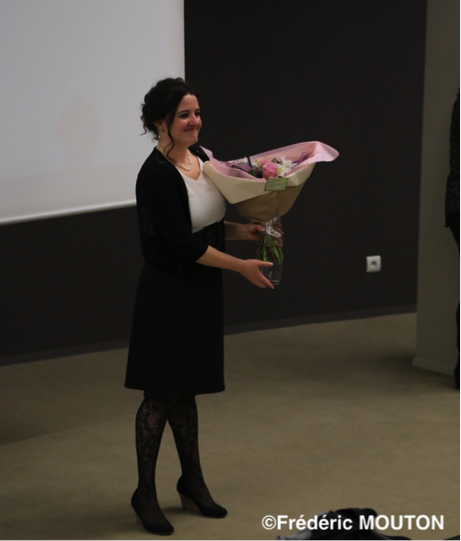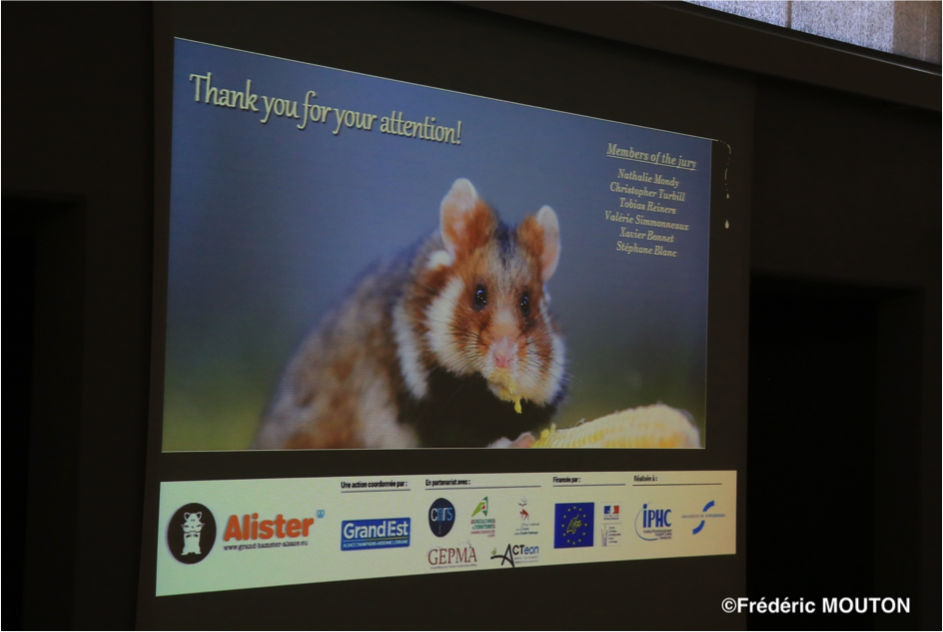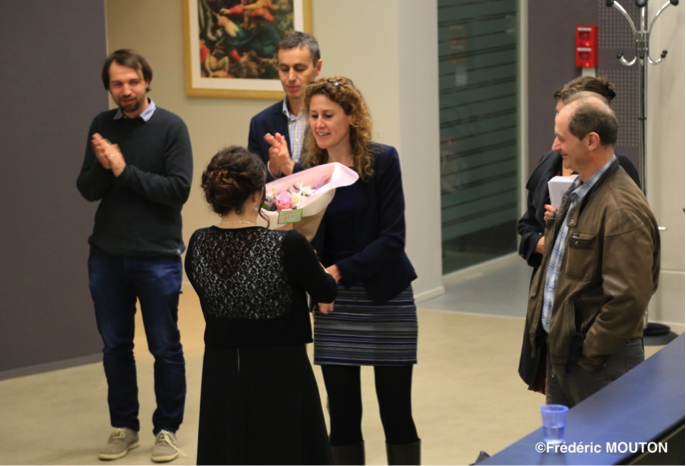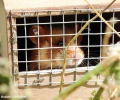A thesis opening up several roads on the survival of the European Hamster in Alsace
17 mai 2017On Friday 28 April 2017, after three years of post-graduate education, supervised by Caroline Habold and Yves Handrich, Mathilde Tissier, a doctoral student at the Hubert-Curien multidisciplinary institute and the Strasbourg University, defended her thesis: “Evaluating the nutritional quality of different crops and introducing anti-predation mechanisms to restore the habitat of the European hamster (Cricetus cricetus) and reconnect populations”. The jury congratulated her and she thus obtained her PhD. Let’s have a look at her work.
This thesis had two goals:
1) Improving the European Hamster’s habitat, based on an exhaustive census of existing animals, experiments with the most promising agricultural practices and how they impact the biology of the species. The Leirs demographic model(2002) proves that only an increase in its breeding success will stabilise populations in Western Europe in a sustainable manner. Such being the case, its breeding success depends on food available before hibernation, but also during gestation and lactation of females and the growth of young animals (Franceschini-Zink & Millesi, 2008).
2) Reconnecting populations. Fragmentation of the European Hamster’s habitat is linked to two different phenomenons: the intensification of industrial agriculture and fragmentation of zones where its survival is favoured (food/predation); the enormous urban sprawl and infrastructures associated to it, increasing even more the separation of populations. To mitigate Alsace’s very dense road infrastructures, some of these have been equipped with passages for wildlife, which are used by small carnivorous animals and by European Hamsters. The functionality of these passages could be compromised should there be an increased risk of predation when crossing.
So, my goal and approaches in this thesis were double:
- The first part was to experiment, in captivity or semi-captivity, which plants would allow European Hamsters to have an optimal hibernation and the best breeding success for food available in their natural habitat, during the entire reproductive cycle.
- The second part of this thesis consisted in assessing the effectiveness of anti-predation tools when the hamsters were crossing in wildlife passages. These tools were then tested in a semi-natural environment with complete video monitoring. At the same time, hamsters were released in a paddock to provoke an experimental meeting with other predators (cats, foxes and ferrets).
All in all, eleven studies were carried out in three years for the LIFE Alister Project.
The first part of the study targeted food and highlighted the essential function of the choice of crops in the fight against the disappearance of the European Hamster. Whilst the importance of vegetation cover in fields appeared quickly as a method to block predation, the importance of nutrients was analysed and assessed in Mathilde Tissier’s work. Work in the lab was enriched with discussions with farmers in order to test these applications in their fields. This was an essential step in determining the feasibility of combinations of crops as well as their economic interest for agriculture.
There are currently several farmers in the hamster zone who are testing combined crops. The association of crops which seems to be the most conducive for the European Hamster are wheat-soybeans, maize-sunflowers and maize-radishes.
The second part developed an anti-predation system with a second tunnel made from PVC, to be installed in the wildlife passages. These tests allowed us to hone the shape and the diameter the most adapted to hamsters (increasing the use of this system): a rounded tube (like the hamsters’ galleries), 10cm diameter, with openings on the sides each metre.
This anti-predation system was “patented” by a methodological publication in 2016, in the Ecological Engineering magazine.
 What we learned in this thesis allows us to open up new paths in preserving the European Hamster.
What we learned in this thesis allows us to open up new paths in preserving the European Hamster.
Agronomic research applied to agricultural diversity linked with the European Hamster’s needs is currently on-going on several parcels in the hamster zone, in especially so with CUMA de la Plaine farmers. LIFE Alister partners, including the Alsace Chamber of Agriculture, are closely following these trials. Work done by Mathilde Tissier will be continued with another thesis, by Florian Kletty.
As for equipping wildlife passages, this will allow a reconnection in the European Hamster’s territories, and will soon be available to local municipalities.
On behalf of the entire LIFE Alister team, thank you Mathilde, for your work and your motivation! And we wish you all the best for your upcoming studies.






